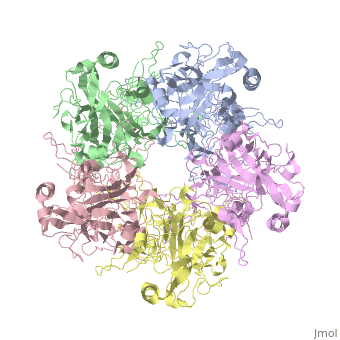Introduction
Gardasil 9 is a recombinant vaccine for the human papillomavirus and protects from the 9 most common forms that are known to cause the majority of HPV-related diseases and cancer. These types are 6, 11, 16, 18, 31, 33, 45, 52, and 58. HPVs are the causative agents of human neoplasia such as warts and cancers [1]. The HPV vaccine is recommended for children ages 11 to 12 and is intended for females ages 9-25 and protects against cervical cancer, vulvar and vaginal cancer, anal cancer, and genital warts. The vaccine is also intended for males ages 9-26 and protects against anal cancer and genital warts [2]. Gardasil vaccine is made up of proteins that resemble the ones on the outside of an actual human papillomavirus [3].The main ingredient in Gardasil 9 is the [4].
Function
Gardasil mimics the , but it does not contain any viral DNA which removes any chance of infection of the HPV virus. This vaccine allows the body to create antibodies against HPV in order to be able to remove the virus if it is introduced in the body. Since the L1 protein is the main structural component of HPV and Gardasil, Gardasil can use this protein to remove HPV from the infected cells [3]. The antibodies provided by Gardasil prevent HPV infection by keeping the virus from entering the epithelial cells of the genitals. However, the antibodies created do not last forever, so the gardasil vaccine will need to be followed up with booster shots[5]. Since Gardasil is a relatively recent developed vaccine, many specifics are still not known about how it functions. “The exact role of various immune mechanisms in the protective efficacy of the HPV L1 VLP vaccine remains to be determined [6].”
Structural Highlights
The main ingredient in Gardasil 9 is L1 Major Capsid Protein[4]. L1 Major Capsid Protein has 72 pentamers of major capsid proteins that are linked together by , shown in red on the monomer, that creates an icosahedral capsid with a T=7 symmetry, which is a spherical protein [7]. The disulfide bonds are formed to increase the stability of the pentamers. The disulfide bonds in HPV16 is between and Cys428[8]. L1 Major Capsid Protein is associated with L2 Minor Capsid Protein. The L1 Major Capsid Protein is built of mainly [9] shown in orange. Other inactive ingredients in Gardasil 9 are amorphous aluminum hydroxyphosphate sulfate, yeast protein, sodium chloride, L-histidine, polysorbate 80, sodium borate, and water [10]. Amorphous aluminum hydroxyphosphate sulfate is used to increase the antibody response in the body by increasing the ability of the antigen to have a response to the virus [11]. Yeast is used to express the specific protein from each HPV virus type in order to create numerous copies of those proteins [12]. L-histidine is an enzymes used to create histamines that creates an immuno-response against a pathogen [13]. Polysorbate 80 is used is vaccines in order to create an even blend of all the ingredients in the vaccine [14]. Sodium borate and water are used as a buffer and a solvent, respectively, for the other ingredients ingredients in Gardasil [15].
Relevance to Human Health and Disease
Human Papillomavirus (HPV) has over 100 known strains that have been classified into 16 different groups (A-P), and it can be distinguished into two infectious groups: cutaneous HPV and mucosal HPV. Infection of HPV causes papillomas on the site of infection, which can include (but not limited to) the anus, vulva, scrotum, penis, and groin. The human papilloma virus is one of the most common sexually transmitted diseases in the world [16].
HPV can be transmitted on fomites, with asymptomatic shedding promoting transmission. HPV can be acquired from direct contact with small breaks in the skin or mucosa, from sexual intercourse, or when an infant passes through an infected birth canal [16].
Different HPV types are tissue specific, causing different disease presentations. That is why Gardasil targets nine different types of HPV: Types 6, 11, 16, 18, 31, 33, 45, 52, and 58 [1]. In particular, types 16 and 18 can trigger the development and late onset of cervical carcinoma, a cancer typically seen in sexually active females that is asymptomatic for several months and upwards to a decade before ultimately leading to infertility. HPV-6 and HPV-11 can also cause cervical carcinoma but are more renowned for causing condyloma acuminatum along with oral and laryngeal papillomas. HPV-31, HPV-33, HPV-45, HPV-52, and HPV-58 are all less common causative agents of cervical intraepithelial neoplasia and cancer [16].

